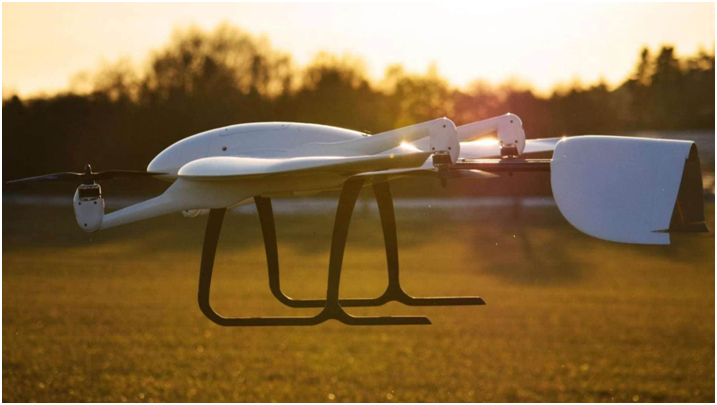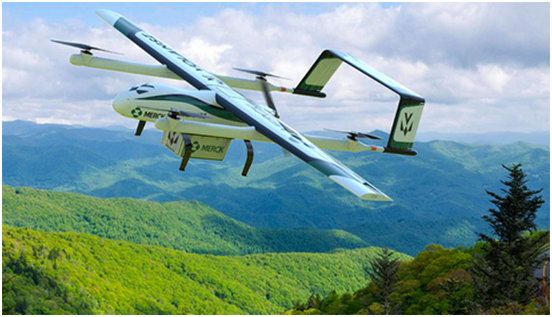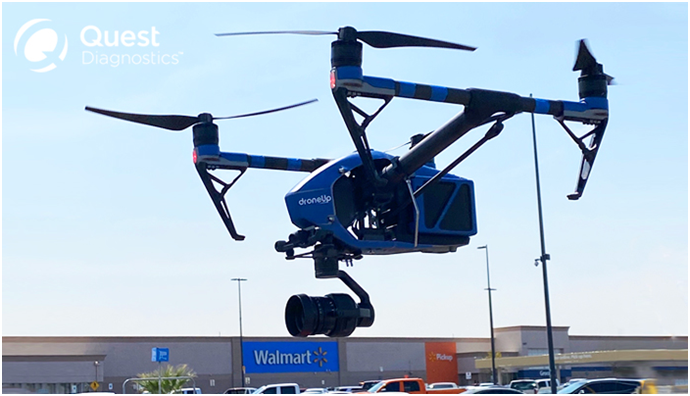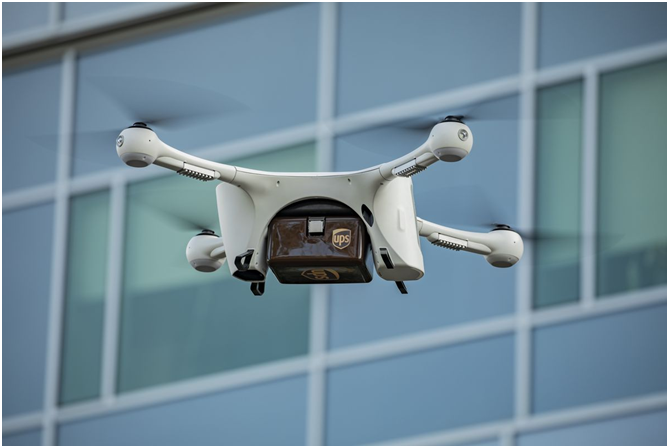
Charles R. Goulding and Ryan Donley find common ground in advanced technologies and vaccine distribution efforts.
In January 2021, drone company Wingcopter raised US$22 million in Series A funding and received US$145,000 from Germany’s Exist Founder Scholarship. The Wingcopter project has benefited from utilizing parts from rapid prototyping such as 3D printing and laser cutters. Wingcopter has recently been working closely with the Innovation Center Maker Space by utilizing its Rapid Prototyping Lab facilities to test and evaluate use cases for their 3D printed drone parts.
Wingcopter has been working on drug delivery since 2018 and according to CEO Tom Pluemmer, “One Wingcopter drone can deliver up to 2,500 vaccines in a day and we are seeking partners to build a new drone that could deliver up to 1,000 doses in one flight.” The ramp-up in vaccine and drug delivery has been especially crucial during the ongoing pandemic, especially for sparsely populated areas where obtaining necessary medical care is problematic. Currently, Wingcopter is engaged in a testing process that involves transporting medical products and lab samples in Tanzania as well as delivering payloads of insulin to remote areas in Ireland.
The adoption of rapid prototyping for drone parts and technologies using 3D printing has led to more companies incorporating drone programs. Programs have been adopted in the medical industry as companies like Walgreens and CVS have begun prescription deliveries in test batches.
Drone Use in Healthcare
Drone deliveries in healthcare have rapidly risen as hospitals and pharmaceutical companies are announcing partnerships with drone companies. In response to the pandemic, many healthcare companies and facilities are utilizing drones to deliver vaccines, prescriptions, testing kits, and more.
Merck & Co.

Merck & Co. is a multinational pharmaceutical company and one of the largest in the world. Recently, Merck opened pilot programs for drone use in order to explore potential delivery options to enhance its medical supply chain. Merck partnered with Volansi, a drone delivery company, to lift off the drone program.
The drones will be tested in several North Carolina counties, especially rural ones that are outside the standard medical supply chain. According to Volansi CEO and Co-Founder, Hannan Parvizian:
“We’ve seen the world’s supply chain strained like never before from the impact of coronavirus. There’s now an accelerated need for rapid advancements in supply chain technology, especially in healthcare. Drone delivery is one solution to getting critical supplies where they are needed, at the moment they are needed most.”
Merck’s expansion into 3D printing has grown exponentially as they entered a cooperation agreement with Additive Manufacturing Customized Machines (AMCM). In this partnership, AMCM will be developing a customized 3D printer that would allow Merck to produce 3D printed drug tablets. Merck isn’t limited in its abilities to 3D print drugs, moreover the company can invest in 3D printing for their drone programs.
Quest Diagnostics Company

Quest Diagnostics Company is an American clinical laboratory that operates across the globe offering access to diagnostic testing. Recently, Quest announced a partnership deal with retail giant Walmart and drone company DroneUp to deliver at-home COVID-19 collection kits in areas such as Nevada and New York. Contactless delivery is a large driver of drone experimentation because of the ongoing pandemic, and offers an opportunity for the healthcare industry to test capabilities in supply chain optimization and expansion.
At the outset of the pandemic, Quest Diagnostics began preparation to roll out 3D printed testing swabs in which the FDA approved Quest’s request to utilize the 3D printed swabs as part of their at-home COVID-19 and Flu diagnostic kits. The same kits are expected to be utilized in the drone delivery programs.
CVS Health

As mentioned, CVS Health has been testing prescription deliveries in batches. Its pilot drone program is in partnership with UPS to bring contactless delivery to areas such as retirement communities. CVS recently announced that under the federal partnership program at least 1,000 of its pharmacies will serve as vaccine homes, which includes about 25,000 nursing home facilities. Distributing and administering the vaccines are both time-consuming and labor-intensive however, the opportunity exists to quickly deliver vaccines through drone programs to nursing facilities and expedite the management process.
UPS possesses a thorough portfolio of 3D printers and products. The company has been experimenting with industrial-grade technologies to print solid materials and deliver quick replacement parts via next day air. The company has also utilized 3D printing for its own practices as machinery, trucks, and drones require unique and rapid repair solutions that 3D printing provides for them. For example, if a vaccine drone needs repairs, it needs to be handled quickly.
The Research & Development Tax Credit
Whether it’s used for creating and testing prototypes or for final production, 3D printing is a great indicator that R&D Credit eligible activities are taking place. Companies implementing this technology at any point should consider taking advantage of R&D Tax Credits.
Enacted in 1981, the now permanent Federal Research and Development (R&D) Tax Credit allows a credit that typically ranges from 4%-7% of eligible spending for new and improved products and processes. Qualified research must meet the following four criteria:
- Must be technological in nature
- Must be a component of the taxpayer’s business
- Must represent R&D in the experimental sense and generally includes all such costs related to the development or improvement of a product or process
- Must eliminate uncertainty through a process of experimentation that considers one or more alternatives
Eligible costs include US employee wages, cost of supplies consumed in the R&D process, cost of pre-production testing, US contract research expenses, and certain costs associated with developing a patent.
On December 18, 2015, President Obama signed the PATH Act, making the R&D Tax Credit permanent. Beginning in 2016, the R&D credit can be used to offset Alternative Minimum tax for companies with revenue below $50MM and, startup businesses can obtain up to $250,000 per year in payroll tax cash rebates.
Conclusion
The growing use of drone technology is optimizing pharmaceutical supply chains. 3D printing for drone spare parts is offsetting expenses and facilitating supply chain management processes, especially with global healthcare product providers.
